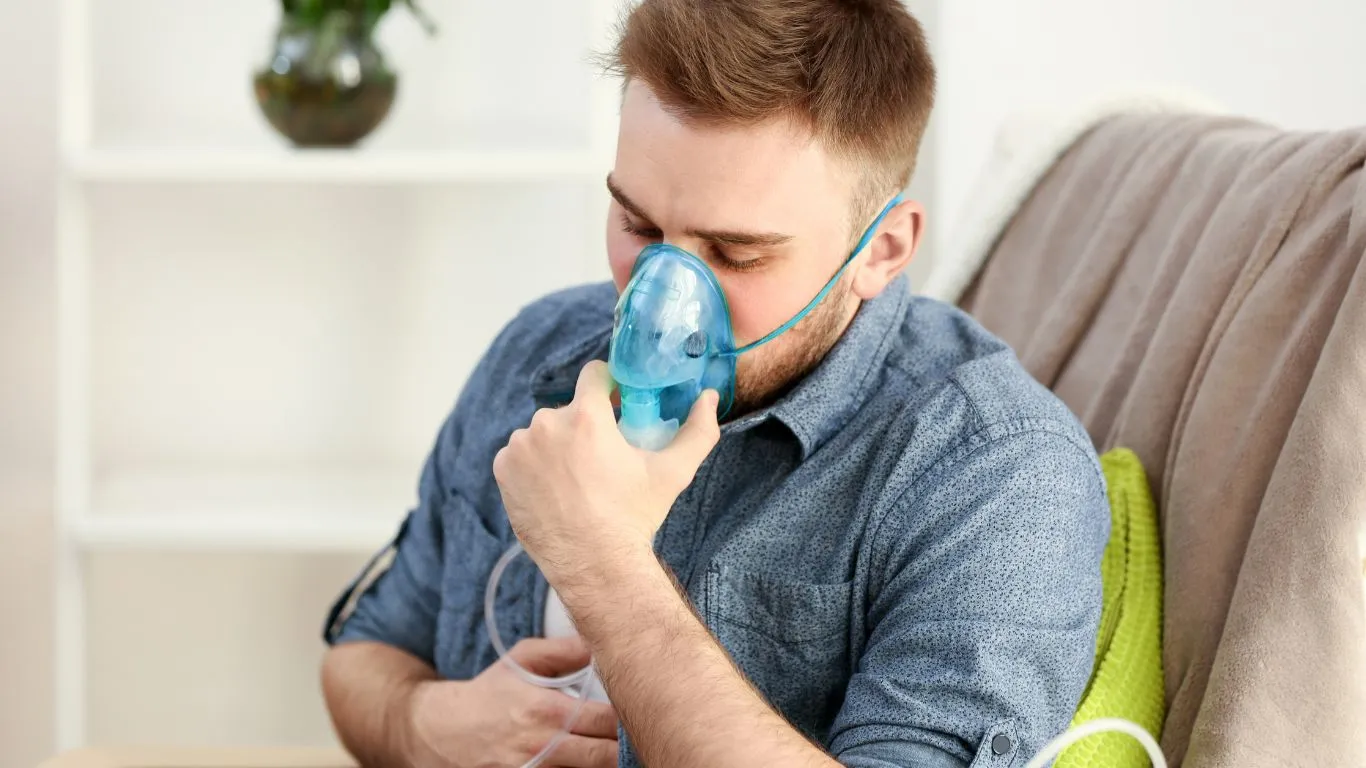Asthma-Safe Ways to Decorate Your Home for Cleaner, Healthier Living
Decorating your home should be an exciting and creative experience, but if you have asthma, certain design choices can trigger flare-ups. As someone who has spent years studying respiratory health, I’ve seen firsthand how small changes in your home environment can make a world of difference. The good news? You don’t have to sacrifice style for safety. There are plenty of asthma-safe ways to decorate your home that keep it looking beautiful while protecting your lungs. Let’s dive into how you can create a gorgeous, breathable living space without triggering allergies or asthma symptoms.
Choose Low-VOC and Natural Paints

One of the biggest culprits of indoor air pollution? Paint. Traditional paints release volatile organic compounds (VOCs), which can irritate your lungs and trigger asthma symptoms. I remember visiting a newly painted home and feeling an immediate tightness in my chest. It was a stark reminder of how critical it is to opt for asthma-friendly alternatives.
Why Low-VOC Paints Matter
- Lower toxin levels: VOCs contribute to poor indoor air quality, which can make breathing difficult for those with asthma.
- No lingering odors: Unlike traditional paints, low-VOC options don’t have that overpowering smell that sticks around for weeks.
- Safe for kids and pets: If you have little ones running around, you’ll feel better knowing your walls aren’t off-gassing harmful chemicals.
When shopping for paint, look for labels that say “Low VOC” or “Zero VOC.” Some trusted brands include Benjamin Moore’s Natura, Behr Premium Plus, and ECOS Paints. Your lungs (and your walls) will thank you!
Swap Heavy Carpets for Asthma-Safe Flooring

Let’s talk flooring. If you’re like me, you love the cozy feel of carpet underfoot. But did you know carpets trap dust, pet dander, mold spores, and other allergens that can worsen asthma? I’ve had patients tell me their symptoms improved significantly just by swapping out heavy carpets for hard-surface flooring.
Best Flooring Options for Asthma
- Hardwood: A classic and elegant choice that doesn’t trap allergens.
- Laminate: More affordable than hardwood but still easy to clean and hypoallergenic.
- Cork: Naturally resistant to mold and mildew, plus it has a bit of softness underfoot.
- Tile: Great for high-humidity areas like kitchens and bathrooms since it won’t harbor mold.
If you can’t part with your beloved carpet, opt for low-pile rugs and vacuum frequently with a HEPA-filter vacuum to keep allergens at bay.
Incorporate Hypoallergenic Fabrics in Your Decor

Your couch, curtains, and bedding might be harboring more allergens than you think. Soft furnishings can trap dust mites, pet dander, and pollen, making them a hidden asthma trigger. I always advise my patients to be mindful of fabric choices to ensure their decor doesn’t become a health hazard.
Best Fabric Choices for an Asthma-Friendly Home
- Leather or faux leather furniture: Easy to wipe clean and doesn’t trap allergens.
- Tightly woven cotton: Breathable, hypoallergenic, and easy to wash.
- Bamboo fabrics: Naturally resistant to dust mites and mold.
- Silk curtains: They resist dust buildup better than heavy drapes.
When possible, wash your bedding and curtains in hot water weekly to kill dust mites and reduce allergen buildup.
Opt for Air-Purifying Plants (With Caution!)

Adding greenery to your home can make it feel fresh and inviting, but for those of us with asthma, not all plants are created equal. While plants can help filter toxins from the air, some can also collect mold, trap dust, or release pollen that worsens symptoms. I’ve had a few patients excitedly add houseplants to their decor, only to find their breathing got worse. So, choosing the right ones is key.
Best Houseplants for an Asthma-Safe Home
- Areca Palm – A natural humidifier that also filters toxins.
- Snake Plant – Absorbs carbon dioxide and releases oxygen at night, making it great for bedrooms.
- Bamboo Palm – Low-maintenance and excellent at removing indoor air pollutants.
- Peace Lily – Helps filter VOCs, but keep it out of reach of pets.
To keep your plants asthma-safe, wipe their leaves down regularly to prevent dust buildup, avoid overwatering to reduce mold, and place them in well-ventilated areas.
Use Hypoallergenic and Non-Toxic Furniture

Most people don’t realize that furniture can be a hidden source of asthma triggers. Many new furniture pieces release VOCs from adhesives, finishes, and synthetic materials. I’ve walked into homes where a new couch or dresser had a strong chemical smell, and I knew right away that those fumes could irritate sensitive airways.
Tips for Choosing Asthma-Friendly Furniture
- Opt for solid wood – Avoid particleboard or MDF, which off-gas formaldehyde.
- Look for water-based finishes – These contain fewer harsh chemicals than oil-based ones.
- Choose organic upholstery – Natural fabrics like organic cotton, wool, and linen are better than synthetic blends.
- Let furniture air out – If buying new pieces, place them in a well-ventilated space or outdoors for a few days to reduce VOC emissions.
One of my favorite tricks? Adding an air purifier in newly furnished rooms to speed up the off-gassing process and keep indoor air fresh.
Be Mindful of Scented Decor
It’s tempting to add scented candles, air fresheners, or potpourri to make your home smell amazing, but for asthmatics, artificial fragrances can be a major trigger. I’ve had to leave homes before because the strong scent of air fresheners made my breathing tight and uncomfortable.
Safer Alternatives to Artificial Fragrances
- Essential Oil Diffusers – Stick to asthma-friendly oils like lavender, chamomile, or eucalyptus, and use them sparingly.
- Beeswax Candles – Unlike paraffin candles, they burn clean and even help purify the air.
- Simmering Natural Ingredients – Boil cinnamon sticks, citrus peels, or herbs for a fresh, chemical-free scent.
- Baking Soda & Activated Charcoal – These work wonders for absorbing odors without releasing harmful chemicals.
Keeping your home fresh doesn’t have to come at the cost of your health. Opt for natural alternatives, and your lungs will thank you!
Case Studies & Real-Life Examples

Let’s talk about real people who’ve transformed their homes into asthma-safe spaces. Over the years, I’ve worked with countless individuals and families struggling to balance home decor with respiratory health. Here are a few inspiring stories that highlight just how impactful these changes can be.
Sarah’s Success with Hypoallergenic Fabrics
Sarah, a 38-year-old mother of two, came to me frustrated. Her asthma had been worsening, especially at night, and she couldn’t figure out why. After reviewing her home setup, we discovered the culprit—her heavy drapes and synthetic bedding were harboring dust mites. She swapped them out for tightly woven cotton curtains and hypoallergenic bedding, washing them in hot water weekly. Within weeks, she noticed a dramatic improvement in her nighttime breathing.
Mark’s Flooring Makeover
Mark, a retired teacher, had been living with asthma for decades. He loved his wall-to-wall carpet but was constantly battling congestion. After some convincing, he replaced the carpet with hardwood flooring and added a few washable area rugs. The difference was night and day—his asthma attacks became far less frequent, and he no longer woke up feeling stuffy.
The Johnson Family’s Scent-Free Switch
The Johnsons were big fans of air fresheners and scented candles. However, their 10-year-old daughter, Mia, kept having unexplained asthma flare-ups. Once they removed artificial fragrances and switched to beeswax candles and essential oils in moderation, Mia’s symptoms became much more manageable. Now, their home smells fresh without the harsh chemicals.
Key Takeaways: What You Need to Remember
If you’re looking to make your home asthma-safe without compromising on style, here’s a quick recap of the most important changes:
- Use low-VOC paints to reduce harmful indoor air pollutants.
- Swap carpets for hard flooring to minimize dust and allergens.
- Choose hypoallergenic fabrics for bedding, curtains, and upholstery.
- Incorporate air-purifying plants, but keep them clean and mold-free.
- Opt for solid wood furniture with water-based finishes to avoid VOCs.
- Avoid artificial fragrances and use natural alternatives like beeswax candles.
Even small changes can make a big difference in reducing asthma triggers and improving your quality of life.
FAQs
1. What is the best type of flooring for an asthma-safe home?
Hardwood, tile, laminate, and cork are excellent choices because they don’t trap allergens like carpets do. If you prefer rugs, opt for low-pile options and clean them regularly.
2. Can I still decorate with plants if I have asthma?
Yes! Just be selective. Stick to air-purifying plants like snake plants and areca palms, and avoid plants that produce excessive pollen or require constant watering (which can lead to mold).
3. How can I make my home smell good without triggering asthma?
Skip artificial air fresheners and candles. Instead, try simmering citrus peels, using essential oils in moderation, or placing activated charcoal in rooms to absorb odors.
Bonus: Additional Resources & DIY Tips
Want to go even further in creating an asthma-friendly home? Here are some extra steps:
- Use HEPA air purifiers in bedrooms and common areas to filter out allergens.
- Wash bedding and pillowcases in hot water weekly to kill dust mites.
- Keep humidity levels between 30-50% with a dehumidifier to prevent mold growth.
- Make your own non-toxic all-purpose cleaner with vinegar, baking soda, and water.
Appendix: References, Disclaimer & Call to Action
For more information on asthma-safe living, check out these trusted sources:
Disclaimer: The information in this article is for educational purposes only and should not replace professional medical advice. Always consult with a healthcare provider before making major changes to your home or asthma management routine.
Ready to create a beautiful, asthma-friendly home? Start with one or two small changes and build from there. If you’ve tried any of these tips, I’d love to hear about your experience—drop a comment or share your favorite asthma-safe decorating ideas!

Bianca Nala is a compassionate Nurse Practitioner with a strong background in primary and respiratory care. As a health writer for Healthusias.com, she combines her clinical expertise with a talent for clear, relatable storytelling to help readers better understand their health. Bianca focuses on topics like asthma, COPD, chronic cough, and overall lung health, aiming to simplify complex medical topics without losing accuracy. Whether she’s treating patients or writing articles, Bianca is driven by a single goal: making quality healthcare knowledge accessible to everyone.






